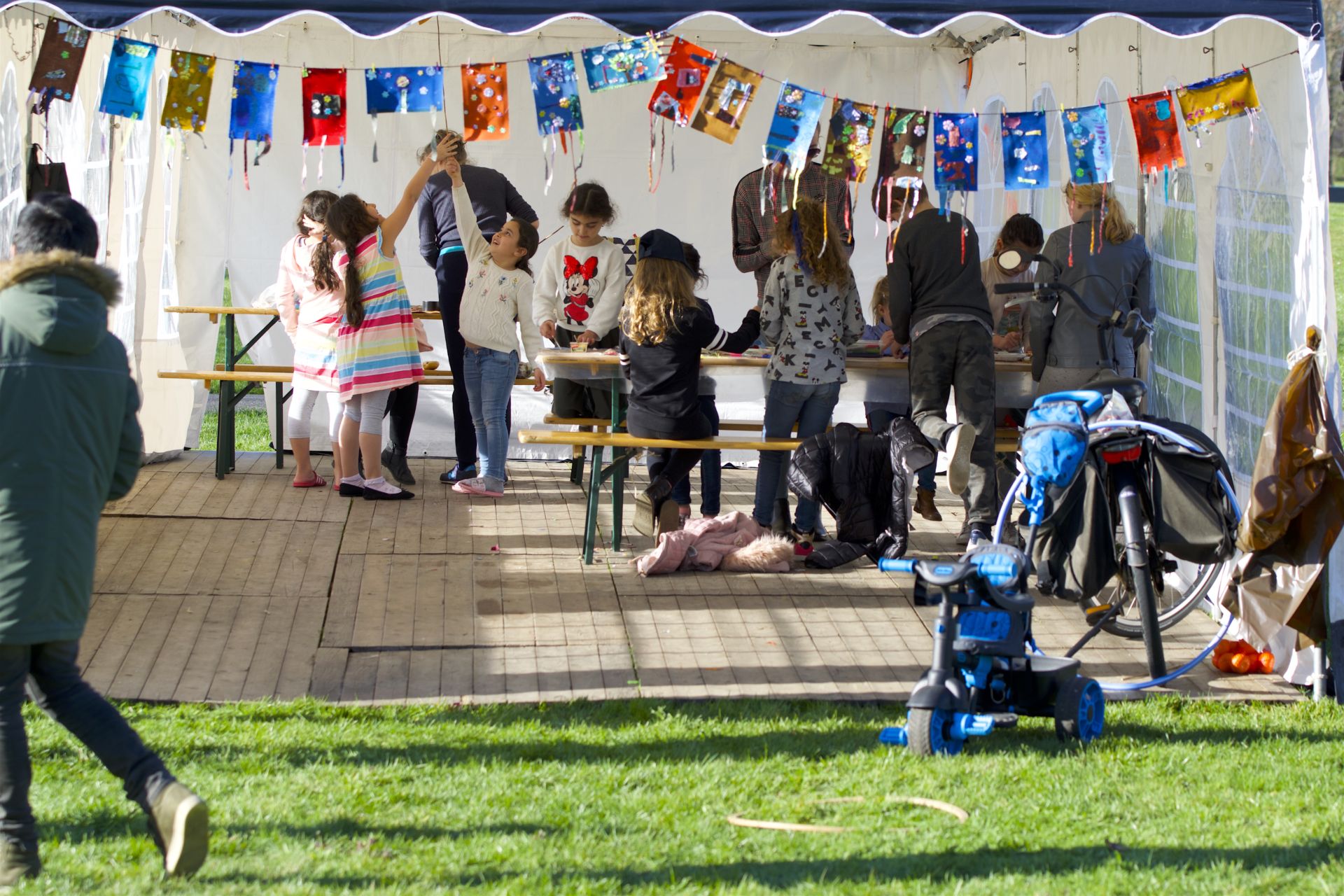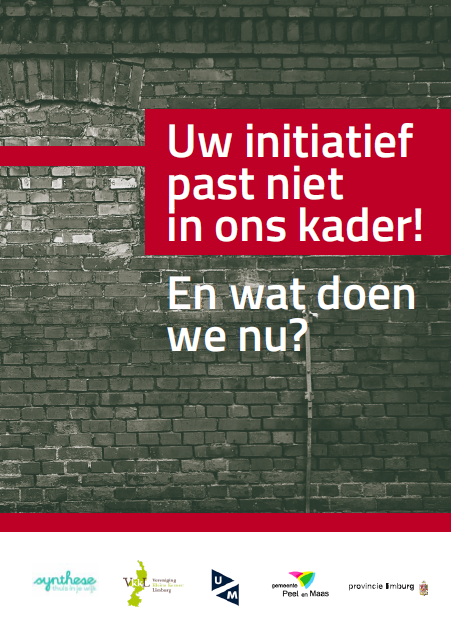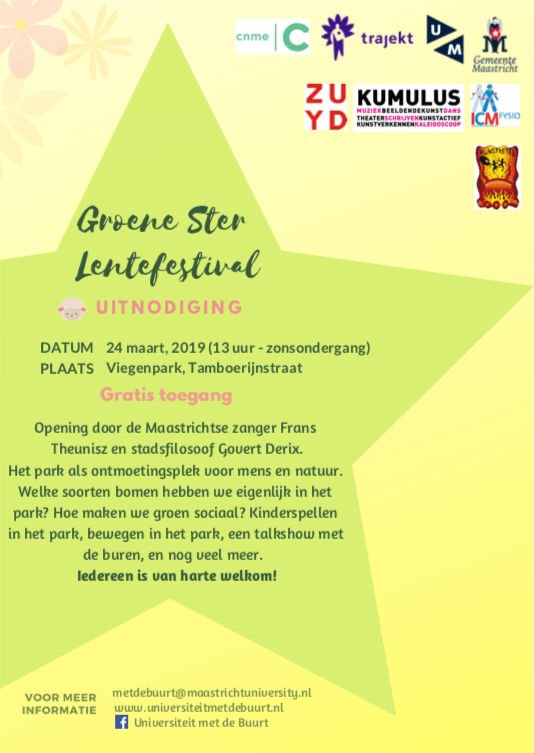Public spaces are needed to foster social connection

Prevention project in Maastricht North-West
People who live in the neighbourhood Maastricht-Noordwest tend to be less healthy than average. Researchers at Maastricht University are talking with them about their lives and ways for them to feel healthier.
Involved research line
- Health Inequities and Societal Participation
For this to happen, the neighbourhood will need to have many more public meeting places, states Klasien Horstman, professor of Philosophy of Public Health. The researchers are working to achieve this together with neighbourhood residents, the municipality, and health and allied health professionals.
Figures from the Municipal Public Health Service and neighbourhood statistics show that residents of Maastricht-Noordwest relatively often suffer from depression, anxiety, isolation and loneliness. They also relatively often use sleeping pills, receive support under the Social Support Act and have debts, says Klasien Horstman.
Increasing health inequalities
Just like the rest of the Netherlands, Maastricht shows significant health inequalities between neighbourhoods. Despite thirty years of international research, these inequalities are increasing rather than decreasing, says Horstman. ‘Many prevention approaches are not in line with the realities, experiences and ideas of the people they were developed for. We hear this from neighbourhood residents, too. We must develop strategies that utilize the knowledge that people in disadvantaged neighbourhoods have. If we want to make a difference, we must take their outlook on life seriously.’
Short videos
In a previous research project in Maastricht-Noordwest, Horstman and her team studied the effect of short videos with local actors and local stories about life problems and how people can help each other out. The same three areas in the neighbourhood have been selected for a new research project on positive health and social resilience in postwar neighbourhoods. Horstman and her team members have been spending a lot of time in these areas. PhD student Sanne Raap spent six months observing the local social work team and conducting walking interviews with residents about their neighbourhood, their health and their social relationships. ‘That way, you find out not only what’s bothering them, but also how they deal with their problems: their social resilience,’ explains Horstman.
Two teahouses
The field research showed that social connections are crucial. However, Maastricht-Noordwest offered few opportunities for people to actually build those crucial social connections. Its residents felt like there were not enough places for them to meet other people. Many traditional meeting places, such as churches, sports centres, shops, small businesses and schools, have disappeared due to demographic developments and urban planning. The 30,000 residents of Maastricht-Noordwest have to make do with two teahouses. These places are full of customers during the day, but closed at night, says Horstman. ‘That’s how liveliness disappears and loneliness grows. “Our neighbourhood is turning into a slum”, some residents say.’
Spring festival
The researchers realised that residents of Maastricht-Noordwest do not feel a sense of ownership of their neighbourhood. To remedy this, they have set up a ‘neighbourhood knowledge laboratory’. Here, researchers and residents identify and solve neighbourhood problems together, strengthening social connections as a result. For example, the residents felt like the public park functioned as a boundary rather than a meeting place. Neighbourhood workgroup Sociaal Groen is now working to make the park a social place again. By organising festivals there in the spring and the summer, they are generating more ideas for using the park. Residents are also looking into the possibility of creating a natural playground there. It’s a plan that combines physical activity with infrastructure, stones and greenery, and social participation – an important combination, says Horstman.
Public spaces
The research project will continue until early 2021. ‘There are no magic bullets for a healthy neighbourhood,’ emphasises Horstman. ‘We are not expecting the prevalence of, say, depression to decrease immediately. We have to return to the idea of people doing it themselves. We can support them by helping them explore what’s bothering them and how they can go about dealing with those problems.’
Designation plan
Horstman has noticed that the research findings are being shared by local health and allied health professionals and the municipality. ‘One of those findings is that the presence of a variety of public spaces and working together on infrastructural and social connections can improve health. There is a discussion going on about reviewing part of the land use designation plan for Noordwest, currently a residential-only area. Health organisations can look into organising their buildings in such a way that residents can meet other people there. We know that social networks protect people from chronic and infectious diseases. Prevention, in other words, involves strengthening social connections.’
The Dutch version of this text was previously published on the ZonMw website.

Involved partners
- Citizens of Maastricht North-West
- Trajekt
- Municipality of Maastricht
- Zuyd University of Applied Sciences
Also read
-
Het aantal inwonersinitiatieven in Nederland groeit sterk. Nieuwe initiatieven ontstaan naast ‘oude’ sociale verbanden, zoals verenigingen. Al die initiatieven zijn gericht op de ontwikkeling van een gemeenschap (collectieven) en daarmee een antwoord op toenemende individualisering en samenloosheid...
-
The workgroup ‘Socialgreen’ of ‘Universiteit met de buurt’ investigates, together with residents of Maastricht North-West, how the green in their neighbourhood could become a meeting place for people and for people and nature.


